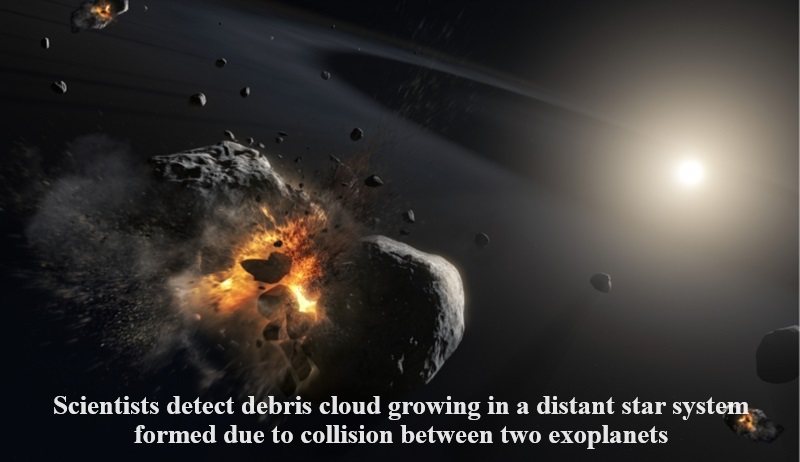
Scientists have observed the emergence of a debris cloud in a distant stellar system, likely resulting from a collision between two exoplanets.
As outlined in a paper published in the journal Nature, the identification of this expanding debris cloud provides support for the notion that collisions between newly formed planets within circumstellar disks can occur. Additionally, this study sheds light on the tumultuous history of our own Solar System during its early stages of development.
The stellar system under scrutiny, known as ASASSN-21qj, is situated approximately 1,850 light-years away from Earth. Initially detected in 2021 through a ground-based all-sky survey, astronomers monitored ASASSN-21qj due to fluctuations in its luminosity.
During observations, ASASSN-21qj exhibited a pronounced increase in brightness, particularly in infrared wavelengths. This surge in luminosity, specifically within the infrared spectrum, suggests a sudden augmentation in the presence of dust and debris surrounding the star.
It is theorized by astronomers that a significant and violent collision occurred between two exoplanets within the distant stellar system. Additionally, researchers detected the existence of a circumstellar disk encircling the star. These disks are known to harbor remnants of material from which new planets form subsequent to the star’s formation.
In summary, the discovery of a burgeoning debris cloud in the ASASSN-21qj star system not only lends credence to the notion of planetary collisions within circumstellar disks but also provides valuable insights into the turbulent early stages of planetary system evolution, including that of our own Solar System.

Post Your Comments